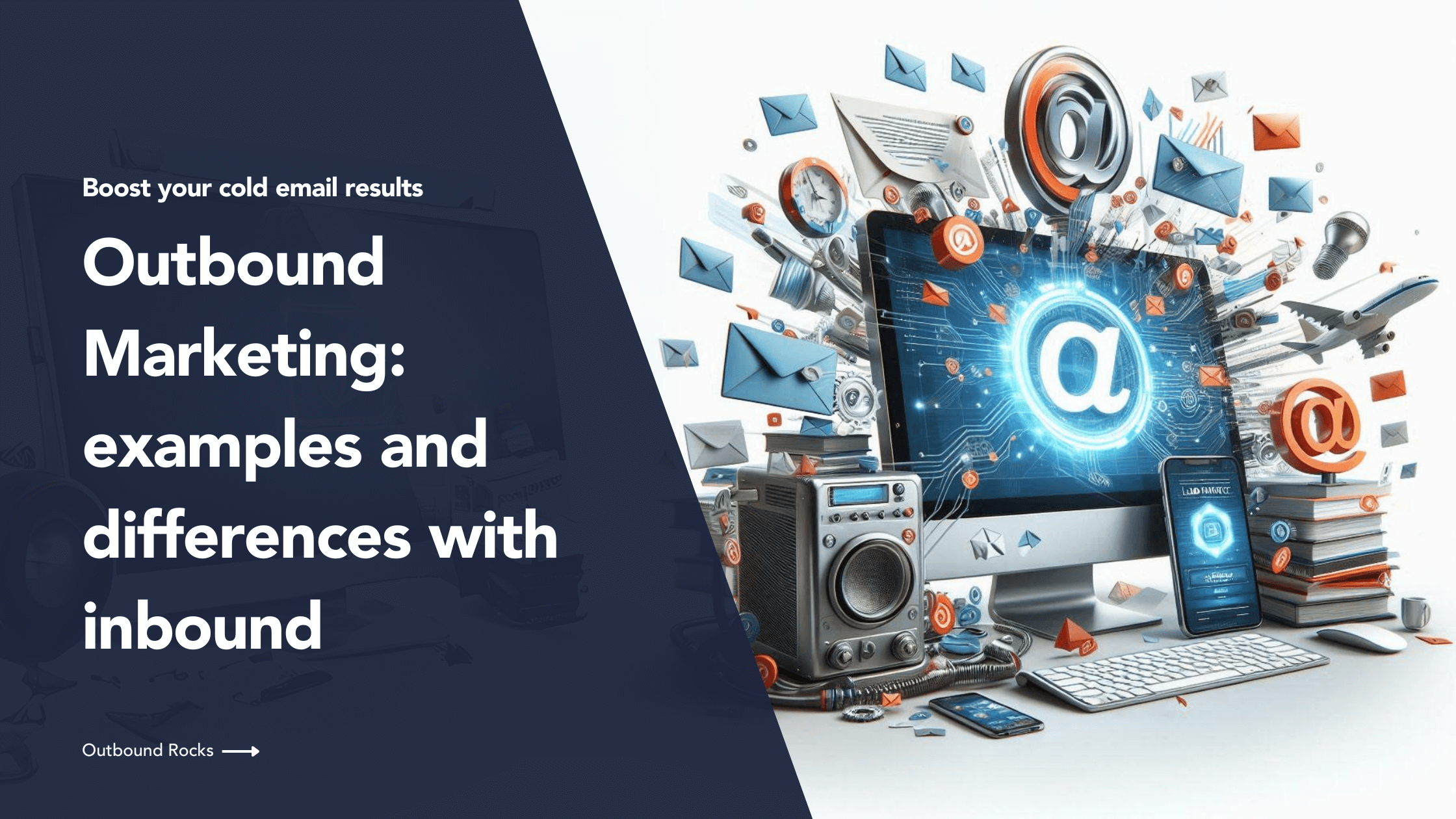Inbound and outbound marketing are terms you should use to improve your company’s positioning and optimise your sales processes. It is about attracting customers, getting their attention and, most importantly, keeping them for as long as possible.
But what is outbound marketing and why could it be of interest to any business? In this article we are going to explain it to you below and show you some examples to make it all clear.
Read on to understand how both approaches can help you generate business opportunities and build lasting relationships with your customers and prospects.
TABLE OF CONTENTS
– What is outbound marketing?
– Examples of Outbound Marketing techniques
– Benefits of Outbound Marketing
– Disadvantages of Outbound Marketing
– The key differences between Inbound and Outbound
– How to combine Inbound and Outbound Marketing
What is Outbound Marketing?
Outbound is a proactive approach where businesses reach out directly to potential customers to generate sales. It’s essentially the opposite of inbound marketing, where customers find the business.
Here are some key characteristics of outbound marketing:
- Direct and unidirectional: Companies push their message out to a broad audience, hoping it resonates with some.
- Traditional and digital formats: It includes methods like TV commercials, cold calls, display ads, and email blasts.
- Focus on sales: The primary goal is to grab attention and convert potential customers into paying ones.
- Simple and direct messaging: Outbound messages are concise and aim to raise brand awareness rather than provide in-depth value.
In simpler terms, outbound marketing is like a salesperson directly approaching you on the street, while inbound marketing is like having an informative website that attracts potential customers who are already interested.
Examples of Outbound techniques
We can find endless examples of outbound activities; these are the most common:
- Advertisements in the press, radio and television.
- Posters in marquees, billboards and other media.
- Merchandising: key rings, mugs, pens, notebooks and all sorts of accessories that convey the company’s brand image and message.
- Mass email marketing (sometimes bordering on spam).
- Direct sales stands.
- Cold door sales.
- Direct mail (by post).
- Events and seminars with the aim of selling.
- Online advertising such as banners on websites and social networks, paid advertising in Google Ads and other SEM campaigns.
Advantages of Outbound Marketing
Outbound offers a powerful toolbox for generating sales opportunities and connecting with potential customers. Let’s explore some of its key advantages:
- Easier to be multi-platform: be omnipresent and generate sales opportunities wherever you find them.
- Faster response times: unlike inbound marketing, which works in the long term, we can adjust our actions more quickly depending on consumer response.
- More direct contacts: in the case of a stand, for example, we speak directly to the person and can take advantage of all the information we get from this immediate feedback.
- We can target a wider audience: in some cases we can segment the audience, but in others we can play with a wider variety of recipient profiles, widening the scope and rethinking the target audience.
Disadvantages of Outbound Marketing
With today’s demanding consumers and the existence of more effective and precise marketing techniques, we have to admit that outbound has its drawbacks:
- Communication is completely one-way and there is little feedback from the consumer.
- Because many intrusive techniques have been abused in the past, consumers often ignore outbound messages or know how to block them. For example, through ad blockers, spam filters or caller ID systems.
- Measuring success can be difficult, especially with offline formats.
The key differences between Inbound and Outbound
While inbound marketing excels at attracting qualified leads, outbound marketing offers a number of distinct advantages. Let’s look at the key differences between the two:
| Inbound Marketing | Outbound Marketing |
| Attracts customers through valuable content | Reaches out to potential customers directly |
| Focuses on engaging customers already in the buying process | Focuses on generating immediate sales |
| Utilizes two-way communication with potential customers | Utilizes one-way communication |
| Content is often detailed and informative | Content is simple, direct, and short |
| Strategies include SEO, blogs, and social media | Strategies include TV ads, cold calls, and direct mail |
How to combine Inbound and Outbound
Forget the outdated ‘either/or’ mentality. Both methods share the ultimate goal of selling a product or service and increasing brand awareness.
The key to their successful combination is strategic execution. Many companies have found that integrating inbound and outbound strategies produces more satisfying results.
For example, at Outbound Rocks, we maintain a blog filled with high-quality, informative content about email marketing. This content serves as an inbound strategy to engage and educate our audience, but it also supports outbound efforts by providing valuable insights that can be used in direct marketing campaigns.
By combining the strengths of both approaches, businesses can achieve a more robust marketing strategy.

Ready to take your outbound campaigns to the next level? Try our free demo today and discover how Outbound Rocks can help you optimize your sales funnel and connect with your ideal prospects.
